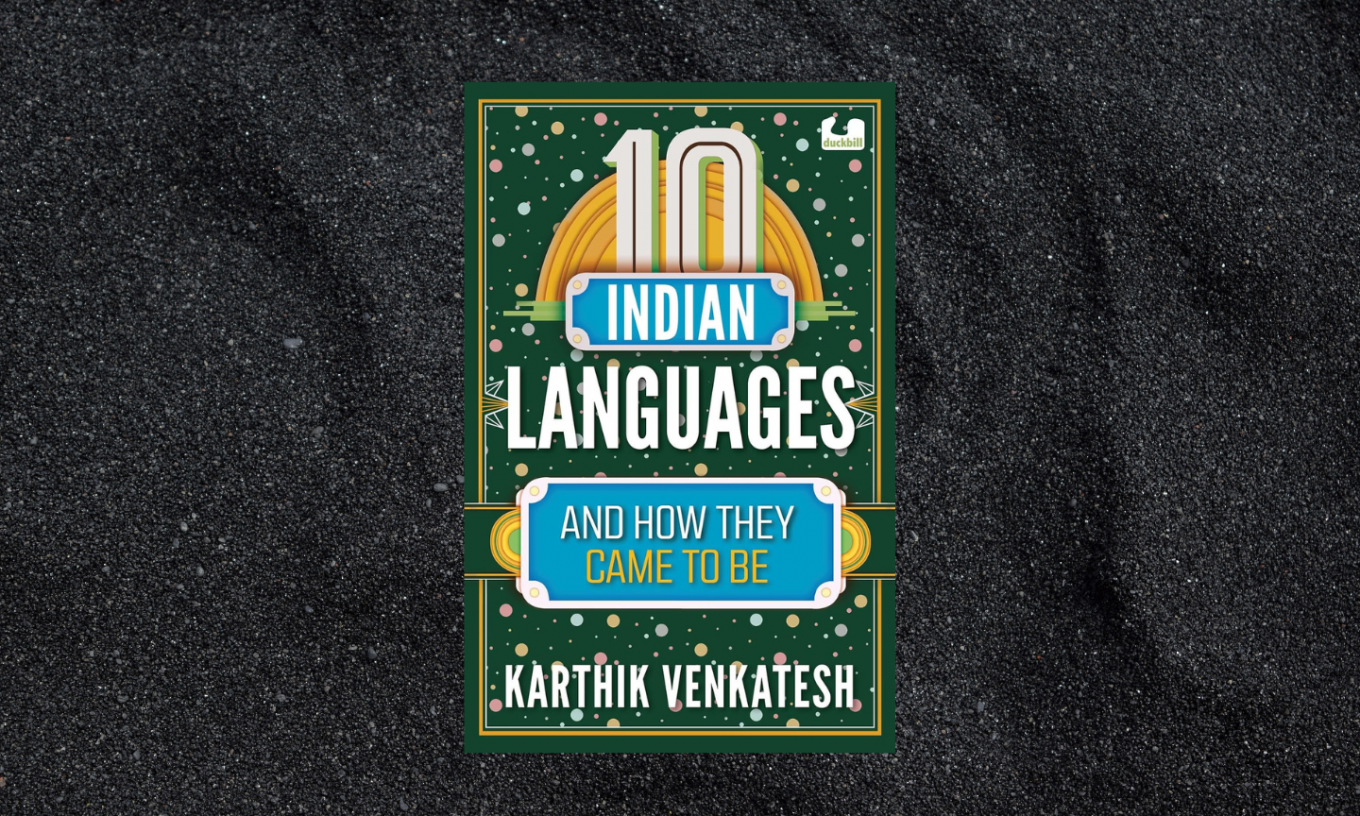Karthik Venkatesh’s book, 10 Indian Languages and How They Came to Be, though categorised as a children’s book, is an interesting enough read for both young adults and adults. Packing quite a punch, the book, as the title says, is about ten Indian languages, culled from the thousand-odd languages spoken in India. It is about their evolution, transformation and development too.
Karthik traces the journey of these languages through time, while also examining the cultural shifts, the political and social influences that have managed to shape them. He also provides an interesting in depth glimpse of the literature in these languages, while tracking the growth of the scripts and identifies moments that have helped in their preservation. We bring you an excerpt that traces the very interesting overlapping of languages and the advent of Hinglish.
***
Hinglish is something most of us would have noticed. It is used in advertising jingles and Bollywood movie titles. This strengthens the impression that it is a recent phenomenon.
But it is actually a couple of centuries old. In 1827, Henry Louis Vivian Derozio (1809–31), India’s first English poet, in his poem ‘Ode—From the Persian of Half’ Queez’ wrote:
Without thy dreams, dear opium,
Without a single hope I am,
Spicy scent, delusive joy;
Chillum hither lao, my boy!
This was a sprinkling of Hindi in an English poem.
In 1887, Ayodhya Prasad Khatri (1857–1905), did the reverse—sprinkled English in Hindi in these lines about life under British rule:
Rent Law ka gham karen ya Bill of Income Tax ka?
Kya karen apna nahin hai sense right now-a-days.
Darkness chhaaya hua hai Hind mein chaaro taraf
Naam ki bhi hai nahin baaqi na light now-a-days.
So, what is Hinglish, really? Is it English with a sprinkling of Hindi words like what Derozio did? Or is it Hindi with a few English words or phrases thrown in, in the manner of Khatri? Also, is it only this hybrid of English and Hindi that needs to be looked at closely? What about the fact that English has also made its way into the other languages of India and that other hybrids have emerged as a result: Tanglish (Tamil and English), Kanglish (Kannada and English), Bonglish/Benglish (Bangla and English), Punglish (Punjabi and English) and so on. All of these are similar to the Hinglish phenomenon. So perhaps the correct name for these tongues should be ‘Inglish’.
Linguists call this phenomenon of multi-lingual speakers alternating between two or more languages during a single conversation, ‘code-switching’ or ‘code- mixing’. Code-switching is different from ‘borrowing’ when a word from one language is borrowed and used in another without translation. A good example of this are the words, ‘kindergarten’ (German for children’s garden), ‘bazaar’ (Persian for market) and ‘ballet’ (from French). Code-mixing goes beyond borrowing. It is to actually think and articulate in two or more languages to make oneself clearly understood. This khichdi of English and a local language is not an exclusively Indian phenomenon, though. Other such tongues exist: Spanglish (Spanish and English) has been observed in many parts of the US, and Taglish (Tagalog and English) is spoken in the Philippines.
It is difficult to say when Inglish became a widely used tongue. But it is perhaps easier to identify how and why English invaded Indian language spaces. After Independence, some politicians tried to make Hindi the ‘national language’. This failed due to resistance from non-Hindi speakers and also because English was the language of higher education, law and trade. For a time, English and Hindi were in competition, with Hindi clearly ruling the heart, at least of some (Hindi films became popular nationally during this time) and English the head (as the language of education and ‘sophistication’). In time, knowing English became almost a necessity and it has become a symbol of modernity and aspiration. But forsaking Hindi (or local languages) is not an option either. Hinglish and Inglish therefore help bridge this gap.
More than anything else, Inglish is perhaps proof that English is now an Indian tongue and has found comfort and acceptance.





